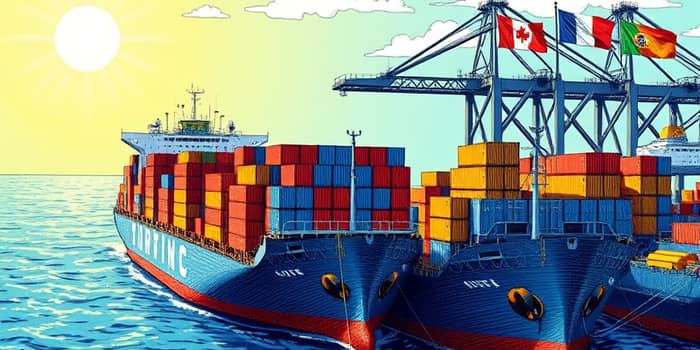
In 2024, world trade surged to new heights, touching a record $33 trillion global trade valuation, thanks to robust demand and recovering supply chains. However, 2025 forecasts point to a slight contraction amid renewed tariff tensions and policy uncertainty. For nations whose economies are anchored in commodity exports, these shifts present both challenges and openings. By understanding the forces driving the rebound, assessing vulnerabilities, and adopting forward-looking strategies, resource-rich countries can not only weather volatility but also capture lasting gains.
The World Trade Organization reports a 3.7% expansion in merchandise trade value year-on-year in 2024, raising hopes of sustained growth. Yet, with reciprocal tariffs looming and geopolitical strains intensifying, 2025 is projected to see a modest 0.2% decline. In a worst-case scenario marked by escalating policy friction, trade volumes could fall by up to 1.5%.
Regional dynamics vary widely. North America faces a steep 12.6% dip in exports, while Asia and Europe remain marginal growth contributors. Africa, Latin America, the CIS, and the Middle East are expected to maintain positive but slower trade flows. Meanwhile, services trade, often a buffer against goods volatility, may grow at just 4.0%, down from earlier optimistic forecasts.
Despite short-term headwinds, long-term fundamentals favor many commodity producers. Developing nations often rely on extractive industries—oil, gas, metals—for public revenues and growth. Price cycles have historically been asymmetric: booms yield modest windfalls, but busts can trigger deep recessions. Today’s demand drivers include post-pandemic restocking, the war-induced supply shocks, and the global pivot toward renewable energy.
Metals exporters, in particular, stand to benefit from long-term demand for green technologies such as electric vehicles and grid storage. Copper, lithium, nickel, and rare earth elements are critical inputs, and their scarcity underpins future price strength. Conversely, fossil fuel exporters face financing and demand pressures as the world accelerates energy transition.
Commodity markets are inherently volatile, exposing exporters to revenue swings. Price busts can halve export earnings, curtail fiscal spending, and exacerbate poverty traps in countries with high dependence. Transparent contract terms, robust data collection, and flexible fiscal frameworks are essential to absorb shocks.
Some practical measures include building strategic reserves, hedging prices through futures markets, and diversifying export baskets. By establishing sovereign wealth funds or stabilization mechanisms, governments can channel windfall gains into social spending and infrastructure, smoothing out cyclical fluctuations.
Africa’s extractive giants, like Nigeria and Angola, have benefitted from high oil prices but often lack transparent revenue tracking. Introducing robust customs data systems can close reporting gaps identified by the World Customs Organization. In Latin America, Chile and Peru are harnessing copper booms to invest in renewable energy, though they remain sensitive to Chinese demand cycles.
In the Middle East and CIS, hydrocarbon revenues fund ambitious diversification plans, yet success hinges on global energy policies. Meanwhile, Asia’s diversified exporters—Indonesia with palm oil and coal, Australia with minerals—illustrate the importance of market agility and multi-commodity portfolios.
To maximize benefits from the trade rebound and shield against future downturns, commodity-dependent nations should prioritize data transparency, fiscal prudence, and structural diversification. Governments can strengthen institutions to negotiate fair contracts, monitor export flows, and engage in multilateral forums to reduce tariff barriers.
As global merchandise trade is set to rebound by 2.5% in 2026, commodity exporters face a critical window to entrench reforms and broaden economic bases. The energy transition’s insatiable appetite for metals offers a multi-decade growth runway for producers who can scale sustainably.
Urgent need for policy transparency and cooperation calls for multilateral support, technology transfers, and capacity building. By aligning fiscal frameworks with environmental and social governance standards, commodity exporters can foster inclusive growth, reduce poverty, and secure resilience against the next cycle.
In the coming years, embracing innovation—whether in greener extraction techniques or digital trade facilitation—will distinguish the winners. With strategic planning and international collaboration, commodity-rich nations can transform cyclical windfalls into lasting prosperity for their people.
References













